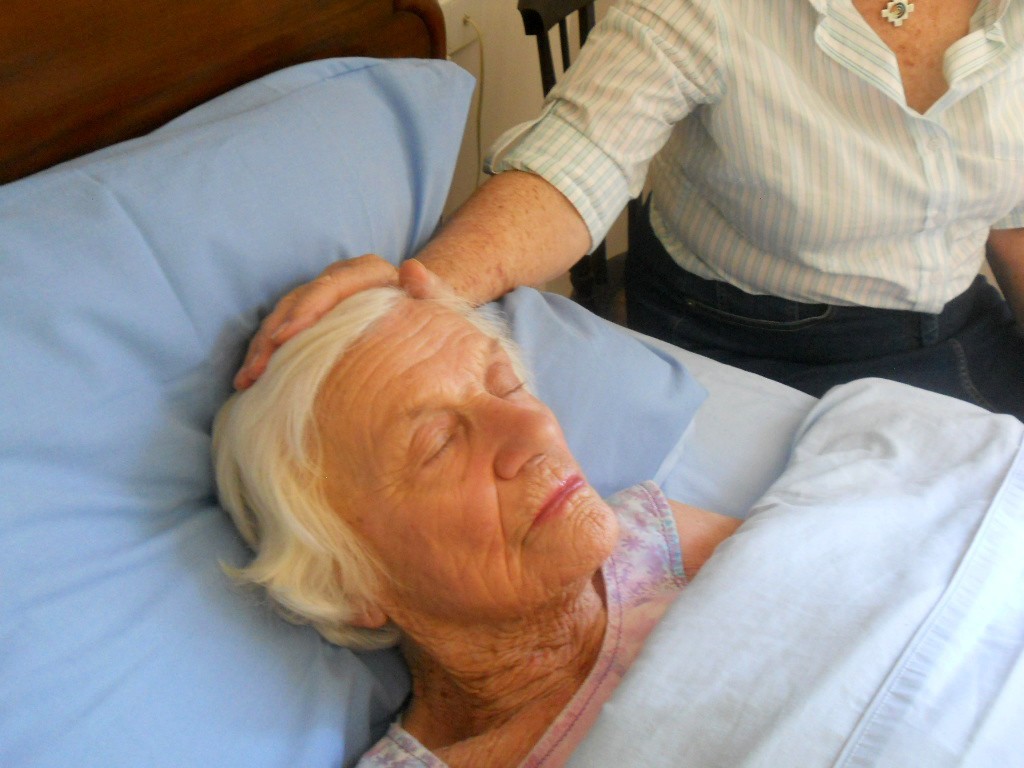Have you ever wondered why, in their final moments, some dying individuals seem to fix their gaze on the ceiling above them? It’s a mysterious aspect of the end-of-life experience that has intrigued many. In this article, we’re going to explore the reasons behind this phenomenon.
We’ll delve into the physical and emotional aspects of this behavior and seek to shed light on a topic that touches us all. Keep reading!
Table of contents
Why do dying people stare at the ceiling?
The act of dying people staring at the ceiling is a behavior that has various possible explanations:
Physical Limitations
In the final stages of life, individuals may experience physical weakness and reduced mobility. This can make it challenging for them to move their heads or shift their gaze, leading to a fixed stare at the ceiling.
Changes in Brain Function
As the body shuts down, there can be changes in brain function, including altered consciousness and cognitive function. This may result in a distant or vacant gaze directed at the ceiling.
Discomfort
Dying individuals may be experiencing discomfort or pain, which can limit their ability to change positions. Staring at the ceiling might be a way of finding a more comfortable or tolerable position.
Emotional Processing
The act of staring at the ceiling can also be associated with emotional processing. Dying individuals often grapple with a range of complex emotions, such as fear, reflection, or acceptance. The ceiling may become a canvas for their inner thoughts and emotions.
Spiritual or Cultural Influence
For some, staring at the ceiling may have spiritual or cultural significance. It could be seen as a way of connecting with the divine or preparing for the afterlife, influenced by personal beliefs or cultural practices surrounding death.
Check out this related content: Which Group is a Primary Supporter of Hunter Education?
Is there a medical explanation for this behavior?
Yes, there can be a medical explanation for the behavior of dying individuals staring at the ceiling. This behavior may be attributed to several medical factors:
- Muscle Weakness: In the final stages of life, individuals often experience muscle weakness and diminished control over their movements. This weakness can affect the ability to turn their heads or adjust their gaze, leading to a fixed stare at the ceiling.
- Neurological Changes: As the body approaches the end of life, there can be neurological changes, including alterations in brain function. These changes may result in reduced responsiveness and cognitive impairment, which can contribute to a distant or vacant gaze directed upward.
- Pain and Discomfort: Dying individuals may be dealing with varying degrees of pain and discomfort. Pain can limit their ability to move, including changing their head position, which may result in a stare at the ceiling as they seek a more comfortable orientation.
- Medications: Medications administered for pain management or symptom control can have side effects that affect consciousness and awareness. These medications may contribute to a drowsy or distant state in which individuals may appear to be staring at the ceiling.
- Cognitive Decline: Cognitive decline, such as confusion or delirium, can occur in the terminal stages of illness. This decline can manifest as altered mental states and disorientation, potentially leading to the behavior of fixating on the ceiling.
It’s important to note that while there may be medical explanations for this behavior, it can also be influenced by emotional, psychological, and spiritual factors, making the experience complex and unique for each individual.
Check out this related content: How Tall is Trippie Redd? Everything About the Rapper
Is staring at the ceiling a sign of health?
Staring at the ceiling alone is not typically considered a sign of good health. It can be associated with various factors, some of which may be related to health concerns, while others may not be directly linked to health. Here are some considerations:
- Physical Health: Staring at the ceiling could be a sign of discomfort or physical limitations, such as pain or muscle weakness. In such cases, it may indicate that the individual is experiencing health-related challenges.
- Cognitive Health: Changes in brain function, such as confusion or altered consciousness, can also lead to staring at the ceiling. These changes may be associated with certain medical conditions or medications.
- Emotional State: Staring at the ceiling can be a reflection of one’s emotional or psychological state. It may indicate feelings of sadness, distress, or introspection, which can affect mental well-being.
- End-of-Life Care: In some cases, individuals nearing the end of their lives may exhibit this behavior as part of the dying process. It may be a result of a combination of physical, cognitive, and emotional factors.
To assess someone’s health, it’s crucial to consider a broader range of physical and mental indicators, as well as their medical history and context. If you or someone you know is experiencing unusual or concerning behaviors, it’s advisable to consult with a healthcare professional for a comprehensive evaluation.
You should read: How Tall is Jack Skellington? All the Facts and Details
Conclusion
The act of staring at the ceiling in the final moments of life is a deeply human and complex phenomenon. It may be influenced by a combination of physical, cognitive, emotional, and spiritual factors.
While it remains a subject of fascination and contemplation, it underscores the profound nature of the dying process and the many facets of human experience that it encompasses.
Also check out this content: 26 Legitimate Ways to Get a Costco Student Membership for Free
Frequently Asked Question
The act of staring at the ceiling is often associated with the dying process. It can be due to a variety of factors, including changes in brain function, discomfort, or a person’s spiritual journey as they approach the end of life.
Yes, there can be a medical explanation. As the body shuts down, there may be less mobility and control over eye movements. Staring at the ceiling could be a result of weakening muscles and reduced ability to shift one’s gaze.
Absolutely. Cognitive changes, such as confusion or delirium, can occur near the end of life. Staring at the ceiling may be a manifestation of altered mental states or disorientation.
Yes, emotional factors play a significant role. Dying individuals may experience a wide range of emotions, including fear, reflection, and even a sense of transcendence. Staring at the ceiling may be a way of processing these complex feelings.
Indeed, spiritual and cultural beliefs can influence a person’s actions at the end of life. Some may believe that staring at the ceiling is a way of connecting with the divine or preparing for the journey beyond.
References
- vocal.media– why do dying people stare at the ceiling
- techclient.com– why does a dying person stare at the ceiling
- themumbaicity.com– why do dying people stare at the ceiling
Recommendations
- 26 Legitimate Ways to Get a Costco Student Membership for Free
- What Age Do You Graduate High School?
- Which Group is a Primary Supporter of Hunter Education?
- How Tall is Trippie Redd? Everything About the Rapper
- How Tall is Jack Skellington? All the Facts and Details
- How Big is 5 Inches? 6 Items with Accurate Measurement






